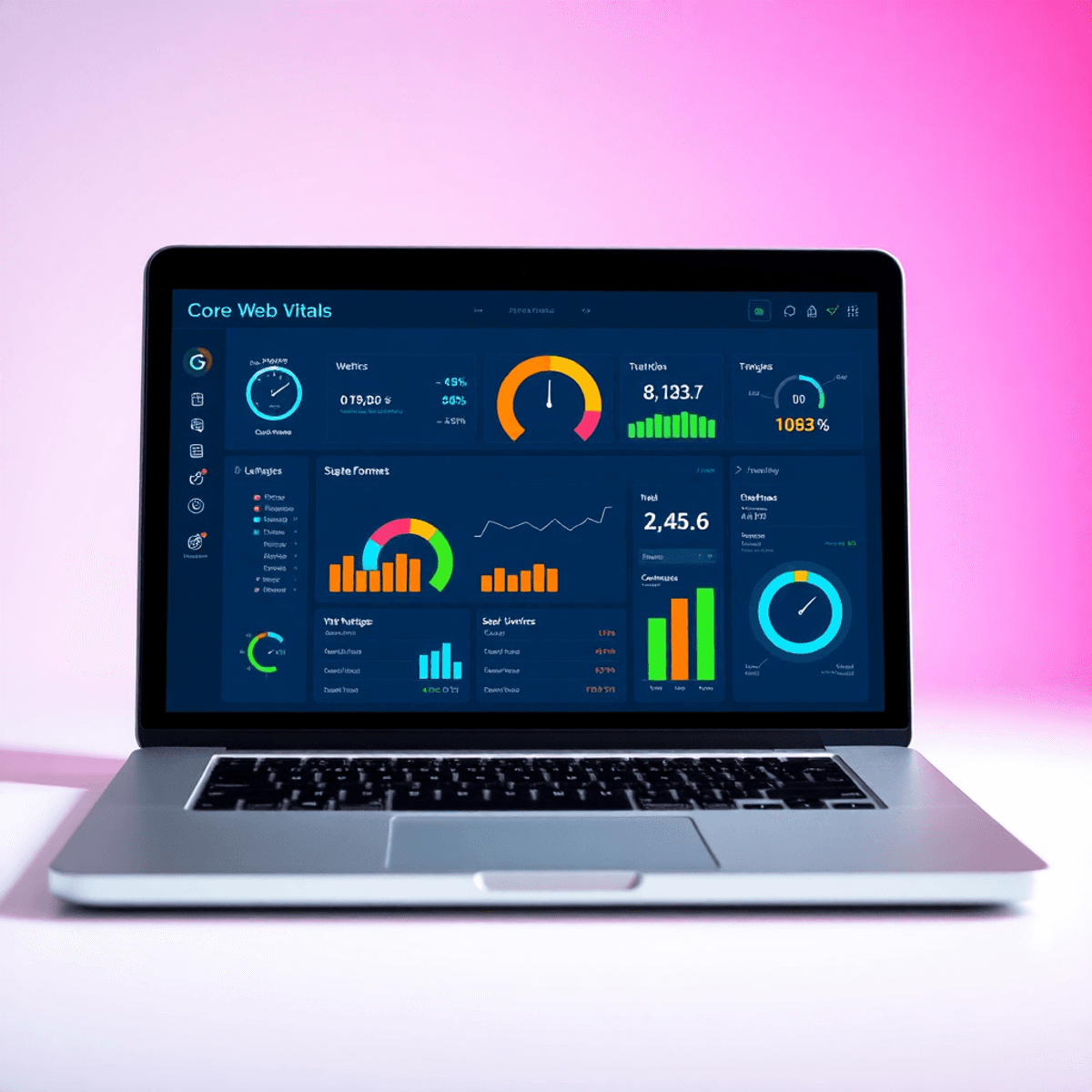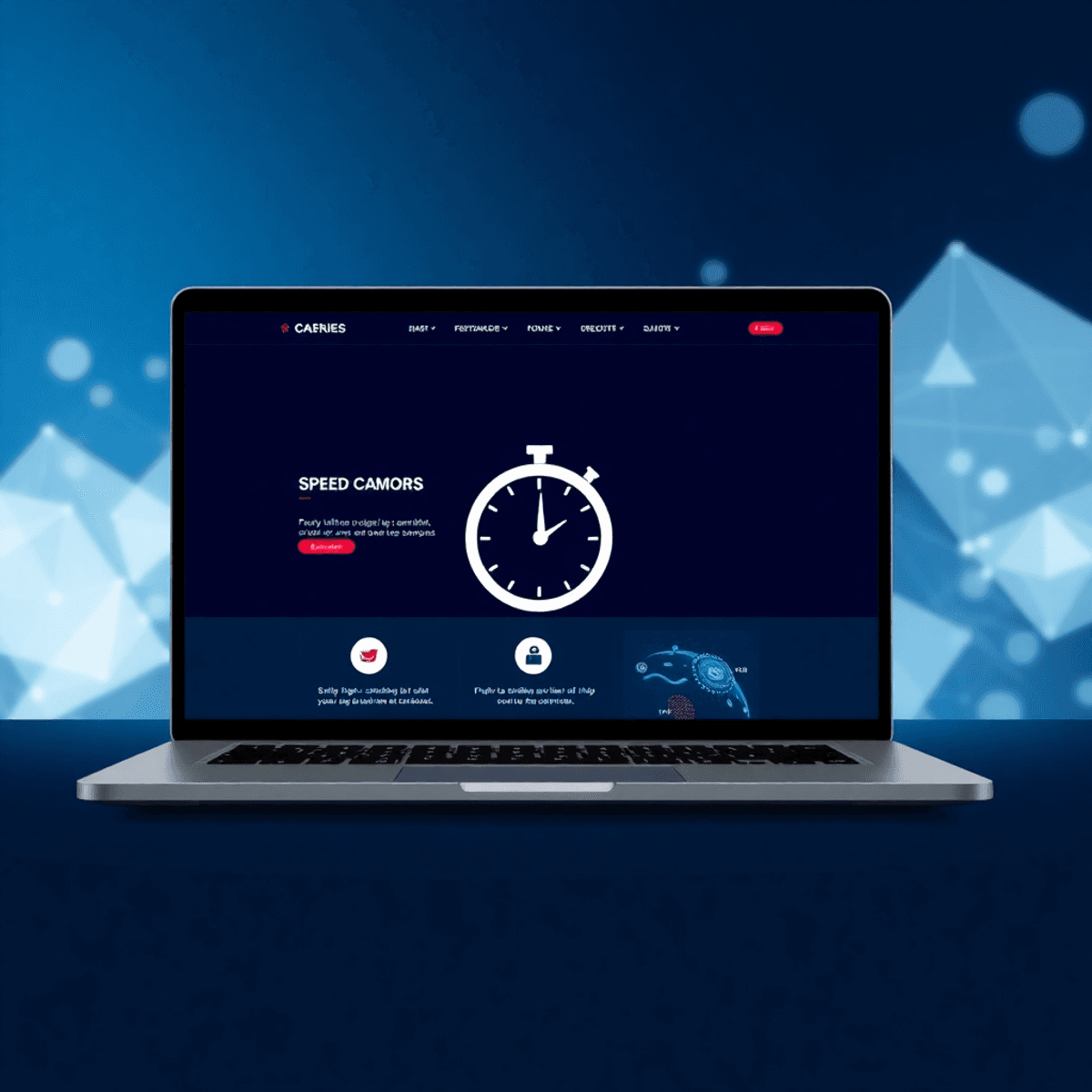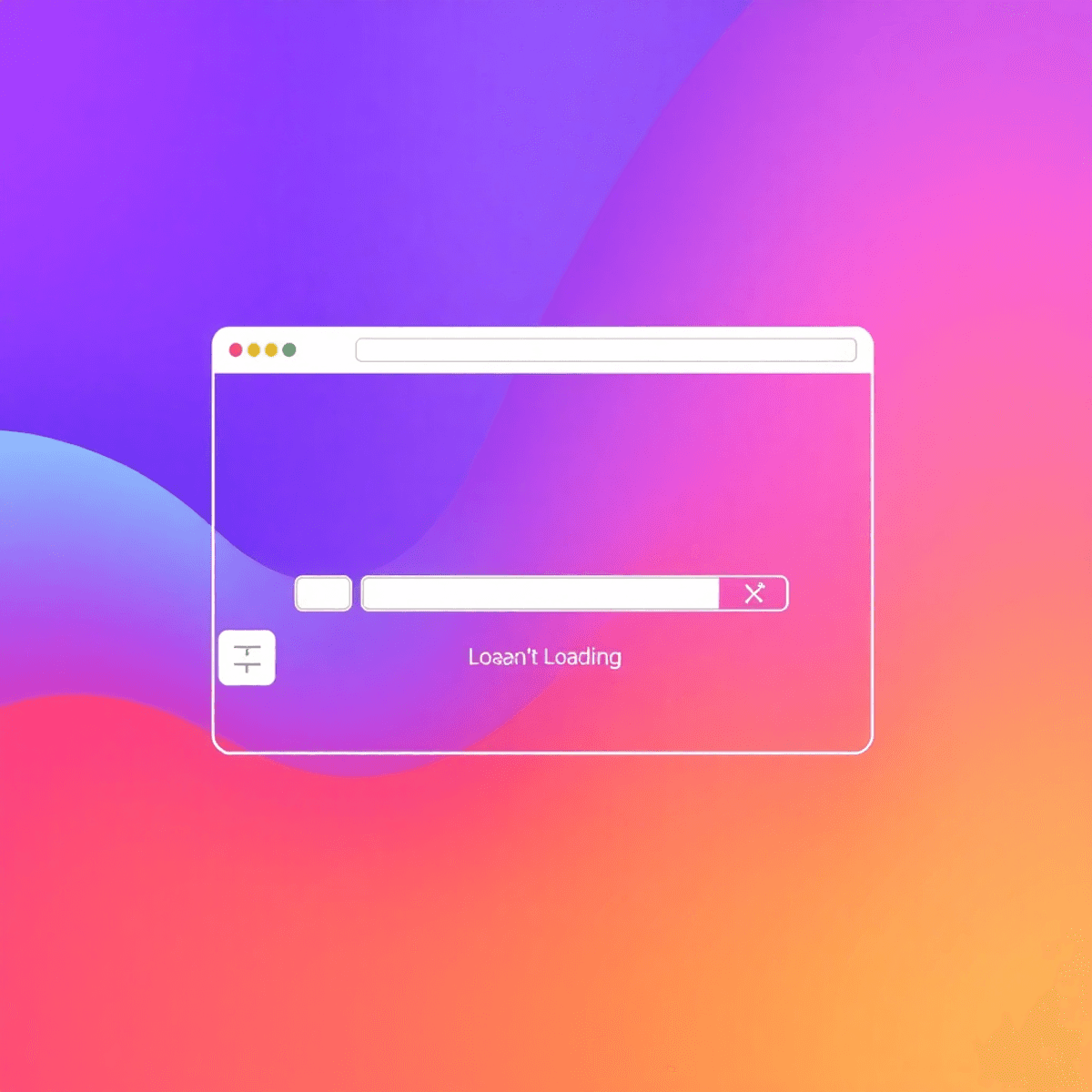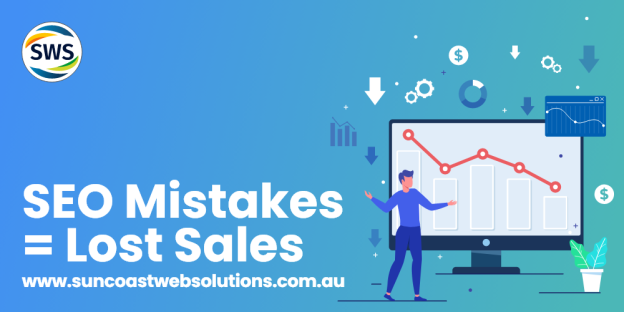Core Web Vitals: 10 Tips to Boost Your Site’s Performance

 12th Dec, 2024
12th Dec, 2024
Core Web Vitals are essential metrics defined by Google to evaluate user experience in terms of loading performance, interactivity, and visual stability of web pages. These metrics directly influence website performance optimization and search engine rankings. The three primary Core Web Vitals include:
- Largest Contentful Paint (LCP): Measures loading performance.
- First Input Delay (FID): Assesses interactivity.
- Cumulative Layout Shift (CLS): Evaluates visual stability.
Achieving optimal scores in these areas can lead to enhanced user satisfaction and reduced bounce rates. In this article, we will explore 10 actionable tips designed to help you improve your site’s Core Web Vitals scores, ultimately providing a better user experience. Implementing these strategies can significantly impact both your search rankings and the overall engagement of your visitors.
1. Optimize Largest Contentful Paint (LCP)

Understanding Largest Contentful Paint (LCP) is crucial for enhancing user experience. LCP measures the loading performance of your webpage, specifically how long it takes for the largest visible content element to appear in the viewport. A good LCP score should be 2.5 seconds or less. If your site takes longer than that, users may become frustrated, leading to increased bounce rates.
Techniques for Optimizing Images and Media
To improve LCP, consider these techniques for optimizing images and media:
- Image Optimization: Compress images using tools like TinyPNG or ImageOptim. Choose appropriate formats such as WebP, which offers better compression without sacrificing quality.
- Responsive Images: Use the
srcsetattribute to serve different image sizes based on the user’s device resolution, ensuring fast loading times across all devices. - Preload Key Resources: Implement
<link rel="preload">for critical resources such as hero images to prioritize their loading in the browser.
Enhancing Server Performance
Server response times significantly influence LCP scores. A slow server can delay rendering of content on your webpage. To enhance server performance:
- Optimize Server Configuration: Utilize techniques like HTTP/2 and Gzip compression to reduce load times.
- Consider a Quality Hosting Provider: Choosing a reliable hosting service can substantially decrease server response time.
By focusing on these strategies, you can create a faster-loading experience that keeps users engaged and satisfied with your website’s performance.
2. Minimize First Input Delay (FID)

First Input Delay (FID) is a critical metric that measures how quickly your site responds to user interactions. It tracks the time it takes for the browser to react when a visitor clicks or taps on something. A low FID score is essential for providing a smooth and enjoyable user experience, allowing people to interact with your content without any noticeable delay.
To improve FID, consider implementing these best practices:
1. Minimize JavaScript Execution Time
Reducing the amount of JavaScript that needs to run during the initial loading phase can have a significant positive impact on FID. Here are some strategies you can use:
- Defer Non-Critical JavaScript: For scripts that are not essential for the initial rendering of your page, use the
deferattribute. This way, the main content can load first, making it faster for users to interact. - Split Your Code: Instead of loading one large script file, break it down into smaller chunks. Load only what is necessary at first and prioritize the functionality that is most important.
- Optimize Event Listeners: Be mindful of how many event listeners you attach when the page loads. Instead of adding them all upfront, consider adding them dynamically as needed.
2. Optimize Third-Party Scripts
External scripts, such as those from third-party libraries or services, can sometimes slow down responsiveness. Take the time to evaluate these scripts and remove any that are not absolutely necessary. If you do need to use them, make sure they are loaded asynchronously so they don’t block other important tasks.
3. Monitor Resource Loading Patterns
Tools like Google PageSpeed Insights or WebPageTest can help you analyze how quickly different resources on your page load and respond to interactions. Use these tools to identify any bottlenecks in JavaScript execution and make optimizations accordingly.
By following these techniques, you can create an environment that is more responsive and keeps users engaged. This will lead to less frustration and encourage deeper interaction with your site.
3. Reduce Cumulative Layout Shift (CLS)

Cumulative Layout Shift (CLS) measures visual stability while a webpage is loading. A high CLS score indicates that users experience unexpected layout shifts, leading to frustration and confusion. The goal is to keep your site’s layout stable, ensuring a smooth browsing experience.
Common Causes of CLS
- Images Without Dimensions: Failing to specify width and height attributes can cause images to load unpredictably.
- Dynamic Content: Elements that load or change after the initial render, like ads or pop-ups, can disrupt the layout.
- Web Fonts: Loading fonts that change the size or spacing of text can lead to shifts.
Strategies to Improve CLS
- Set Size Attributes for Images and Videos: Always define the width and height for these elements in your HTML or CSS. This allocation reserves space before they load, preventing content from shifting.
- Use CSS for Ad Slots: Allocate fixed dimensions for ad spaces to minimize layout changes when ads are displayed.
- Avoid Inline Style Changes: Stick to CSS classes rather than inline styles that might alter element sizes dynamically.
- Preload Web Fonts: Implement font-display strategies like
swaporfallbackto reduce layout shifts caused by font loading. - Monitor Your CLS Score Regularly: Utilize tools like Google PageSpeed Insights or Lighthouse to keep track of your CLS metrics and identify areas needing improvement.
By addressing these common issues and employing effective strategies, you can significantly improve CLS scores, enhancing user satisfaction and contributing positively to your Core Web Vitals metrics.
4. Ensure Mobile-Friendliness with Responsive Design

Catering to mobile users is crucial in today’s digital landscape. With mobile devices accounting for a significant portion of web traffic, ensuring your website is optimized for these users can improve both Core Web Vitals scores and overall user satisfaction.
Importance of Mobile Optimization Strategies
Here are some reasons why mobile optimization strategies are important:
- User Expectations: Users expect websites to load quickly and function seamlessly on their devices. A slow-loading site can lead to high bounce rates.
- Search Engine Rankings: Google prioritizes mobile-friendly sites in search results, impacting visibility and traffic.
Responsive Web Design Techniques
Implementing responsive design techniques will enhance the user experience across various devices. Consider the following strategies:
- Fluid Grids: Use percentages instead of fixed units (like pixels) for layout elements. This allows your site to adjust fluidly to different screen sizes.
- Flexible Images: Ensure images scale according to the viewport dimensions. Utilize CSS properties like
max-width: 100%to prevent overflow. - Media Queries: Apply CSS media queries to change styles based on device capabilities. This enables tailored experiences for smartphones, tablets, and desktops.
Responsive design not only improves Core Web Vitals—such as LCP and CLS—but also creates a consistent experience that fosters user engagement. Prioritizing mobile optimization through these techniques will ensure your website meets the demands of an increasingly mobile-centric audience while enhancing performance metrics effectively.
5. Leverage Browser Caching for Faster Page Loads

Browser caching is a powerful technique that can significantly enhance your website’s performance. It works by storing a copy of your site’s resources—such as images, stylesheets, and scripts—in a user’s browser. When visitors return to your site, their browser retrieves these stored files instead of making additional requests to the server. This process leads to faster page load times, especially for returning visitors.
Benefits of Browser Caching
- Reduced Server Requests: By serving cached resources directly from the user’s device, you minimize the number of requests sent to your server. This reduction not only speeds up loading times but also decreases server load and bandwidth usage.
- Improved User Experience: Faster loading pages lead to higher user satisfaction. Studies show that even a one-second delay in loading can increase bounce rates significantly.
- Enhanced SEO Performance: Google considers page speed as a ranking factor. A well-implemented caching strategy can contribute positively to your Core Web Vitals scores, such as Largest Contentful Paint (LCP).
Setting Up Browser Caching
To implement effective browser caching:
- Leverage Cache-Control Headers: These headers dictate how long browsers should store cached resources. Use “public” for assets that can be cached and set an appropriate expiration time.
- Utilize Expiry Headers: Set specific expiry times for different types of content (e.g., images may be cached longer than scripts).
- Consider Versioning: When updating resources, use versioning in file names (e.g.,
style.v2.css) to ensure users receive the latest versions without losing the benefits of caching.
Implementing browser caching is an effective way to improve page load speed and enhance user experience.
6. Implement Lazy Loading for Offscreen Images and Videos

Lazy loading is a powerful technique designed to enhance page speed and improve your website’s Core Web Vitals. By prioritizing the loading of above-the-fold content, lazy loading defers the loading of non-critical resources, such as images and videos that are not immediately visible to users.
Key Benefits of Lazy Loading
- Improved Load Times: Users can access content faster. Only the elements visible in the viewport load initially, resulting in quicker rendering.
- Reduced Server Load: Since only necessary resources are loaded, this decreases the number of requests made to your server. This optimization can lead to better performance during peak traffic times.
- Enhanced User Experience: A faster-loading site keeps users engaged, reducing bounce rates and increasing the likelihood of interaction with your content.
How to Implement Lazy Loading
- Use Native Lazy Loading: Modern browsers support native lazy loading through the
loading="lazy"attribute on<img>and<iframe>tags. This simple addition can significantly reduce load times without additional JavaScript. - JavaScript Libraries: For more control, consider using libraries like lazysizes or Intersection Observer API. These allow you to customize when and how images load based on user scroll behavior.
- Test and Monitor Performance: After implementing lazy loading, regularly check your site’s performance using tools like Google PageSpeed Insights. Ensure that Core Web Vitals metrics are improving as expected.
Integrating lazy loading effectively not only boosts page speed but also contributes positively to user satisfaction and search rankings.
7. Use Content Delivery Networks (CDNs) for Global Reach

Content Delivery Networks (CDNs) are essential for improving website performance worldwide. They achieve this by strategically placing multiple servers around the globe to store and deliver your site’s assets. This setup significantly reduces latency and ensures faster loading times for users, no matter where they are located.
How CDNs Work
- Asset Distribution: CDNs cache static resources such as images, stylesheets, and scripts on various servers. When a user requests a page, the CDN serves the content from the nearest server.
- Reduced Latency: Serving content closer to the user minimizes the time it takes for data to travel over the network, leading to faster load times.
- Load Balancing: Traffic is intelligently distributed among servers, ensuring no single server becomes overwhelmed during peak times.
Benefits of Using CDNs
- Improved Loading Speed: Faster access to content translates to better Core Web Vitals scores, particularly for Largest Contentful Paint (LCP).
- Enhanced User Experience: Users experience fewer delays and interruptions when accessing your site, which can lead to higher engagement and lower bounce rates.
- Scalability: CDNs can handle sudden spikes in traffic without compromising performance. This is essential for sites experiencing rapid growth or hosting high-traffic events.
Using a CDN is not just about speed; it’s about delivering an optimized user experience across diverse locations. While selecting a CDN provider, look for features like real-time analytics, security measures, and integration capabilities with existing tools. Such considerations ensure that you maximize the benefits of this powerful technology while enhancing your website’s performance globally.
8. Regularly Monitor Your Core Web Vitals Performance with Tools Like Google Search Console & PageSpeed Insights

Monitoring your site’s Core Web Vitals is essential for maintaining optimal performance. Reliable monitoring tools are available to assess and track these critical metrics effectively. Two of the most popular tools include:
- Google Search Console: This free tool provides insights into how your site performs in search results while offering detailed information about your Core Web Vitals scores. It highlights issues that may hinder your performance, allowing you to prioritize fixes based on their impact on user experience.
- PageSpeed Insights: This tool analyzes the content of a web page and generates suggestions for improving speed and user experience. It provides a score based on Core Web Vitals along with specific recommendations for enhancing LCP, FID, and CLS metrics.
Why Regular Monitoring Matters
Continuous monitoring helps you spot issues before they escalate, ensuring that your site remains competitive in search rankings. As you implement optimization strategies, monitoring tools allow you to measure the effectiveness of those changes over time. Google continually updates its algorithms and metrics. Regular use of these tools keeps you informed about any new requirements or best practices.
Incorporating these monitoring tools into your workflow enables proactive management of your site’s performance. By staying vigilant, you can make informed decisions that enhance user experience and maintain high Core Web Vitals scores.
9. Stay Updated on Evolving Metrics and Optimization Techniques

The digital landscape is constantly evolving, and so are the metrics that measure website performance. Staying informed about future trends in Core Web Vitals is crucial for maintaining a competitive edge. One emerging metric to watch is Interaction to Next Paint (INP). This new addition focuses on how quickly users can interact with a page after their initial input, providing deeper insights into user experience.
Key Considerations:
- Adaptation to New Metrics: As Google updates its standards, new metrics like INP may become critical for measuring performance. Understanding these changes helps you adjust your optimization strategies accordingly.
- Continuous Learning: Subscribe to industry blogs, attend webinars, and participate in forums dedicated to web performance optimization. Resources like Google’s Web.dev offer valuable insights into best practices.
- Regular Testing: Utilize tools such as Lighthouse and WebPageTest to assess how well your site performs against both traditional Core Web Vitals and any new metrics introduced.
- Community Engagement: Join developer communities where discussions around emerging trends occur frequently. Networking with other professionals can provide practical advice and insights into effective strategies.
By proactively tracking these developments, you can ensure your site remains optimized not just for today’s standards but also for future demands. Keeping an eye on evolving metrics fosters a culture of continuous improvement, ultimately enhancing user experience and engagement on your site.
10. Prioritize User Experience Beyond Just Core Web Vitals

While Core Web Vitals are crucial metrics for assessing website performance, they represent only a part of the larger picture. Adopting a holistic approach to website optimization ensures that your site not only meets technical benchmarks but also provides an exceptional user experience.
Consider these essential elements:
- Intuitive Navigation: Users should easily find what they need. Clear menus, structured layouts, and a logical flow contribute significantly to user satisfaction.
- Engaging Content: High-quality, relevant content keeps visitors on your site longer. Ensure that your content is not only well-written but also visually appealing, utilizing images and videos effectively.
- Accessibility: Your website must cater to all users, including those with disabilities. Implementing features like keyboard navigation and screen reader compatibility enhances usability for everyone.
- Fast Interaction: While metrics like FID measure the speed of interaction, it’s vital to ensure that all interactive elements function smoothly. This includes buttons, forms, and links that respond quickly to user inputs.
- Responsive Design: A seamless experience across devices is non-negotiable today. Mobile users are prevalent; hence optimizing design for various screen sizes is essential.
Integrating these factors into your strategy can lead to higher engagement rates, lower bounce rates, and ultimately better conversion rates. Remember that delivering an exceptional experience requires continuous assessment and adaptation of both your Core Web Vitals and broader usability components. Prioritizing user experience beyond metrics fosters lasting relationships with visitors and encourages return traffic.
Conclusion
Improving your site’s performance through Core Web Vitals has long-term benefits that extend beyond just metrics. Taking action on the tips shared in this article can enhance user experience and boost your search rankings.
Consider these steps:
- Implement optimizations regularly: Continuous improvement is key to maintaining high scores.
- Monitor performance consistently: Use tools like Google Search Console and PageSpeed Insights to track changes.
- Engage users authentically: Prioritize intuitive navigation and compelling content.
By focusing on these strategies, you can create a seamless browsing experience that keeps visitors returning.
Try out these strategies today and witness how they can positively impact both your search rankings and user satisfaction levels!
FAQs (Frequently Asked Questions)
What are Core Web Vitals and why are they important?
Core Web Vitals are a set of specific factors that Google considers important in a webpage’s overall user experience. They focus on loading performance, interactivity, and visual stability, making them crucial for website performance optimization and enhancing user satisfaction.
How can I improve my Largest Contentful Paint (LCP) score?
To improve your LCP score, optimize images and media elements for the web to ensure they load quickly. Additionally, improve server response times by utilizing faster hosting solutions and minimizing render-blocking resources.
What strategies can I implement to minimize First Input Delay (FID)?
You can minimize FID by reducing JavaScript execution time during the initial loading phase. This includes deferring non-essential scripts, breaking up long tasks, and using web workers to handle background processes.
Why is it important to reduce Cumulative Layout Shift (CLS)?
Reducing CLS is vital for providing a stable browsing experience. A high CLS score indicates unexpected layout shifts that can frustrate users as they interact with the page. To mitigate this, identify common causes of layout shifts and implement strategies like reserving space for images and ads.
How does browser caching enhance website performance?
Browser caching works by storing static resources like images, scripts, and stylesheets locally on a user’s device after their first visit. This reduces server requests on subsequent visits, significantly improving page load speeds for returning visitors.
What role do Content Delivery Networks (CDNs) play in optimizing website performance?
CDNs enhance website performance by distributing your site’s assets across multiple servers located globally. This reduces latency and improves load times for users accessing your site from different geographical regions, thereby enhancing overall user experience.
we are your one-stop internet marketing solution on the sunshine coast!

 07 5479 3888
07 5479 3888









